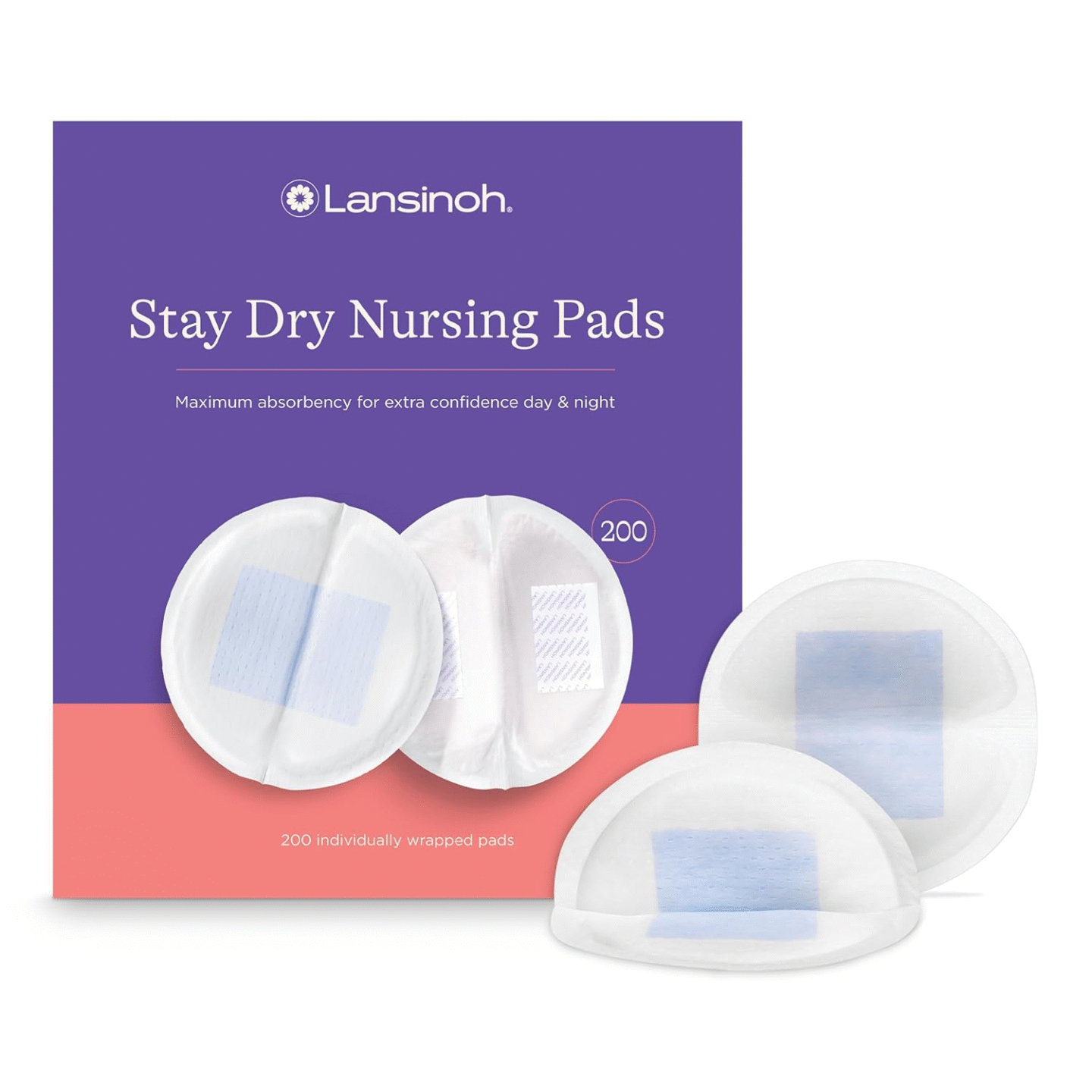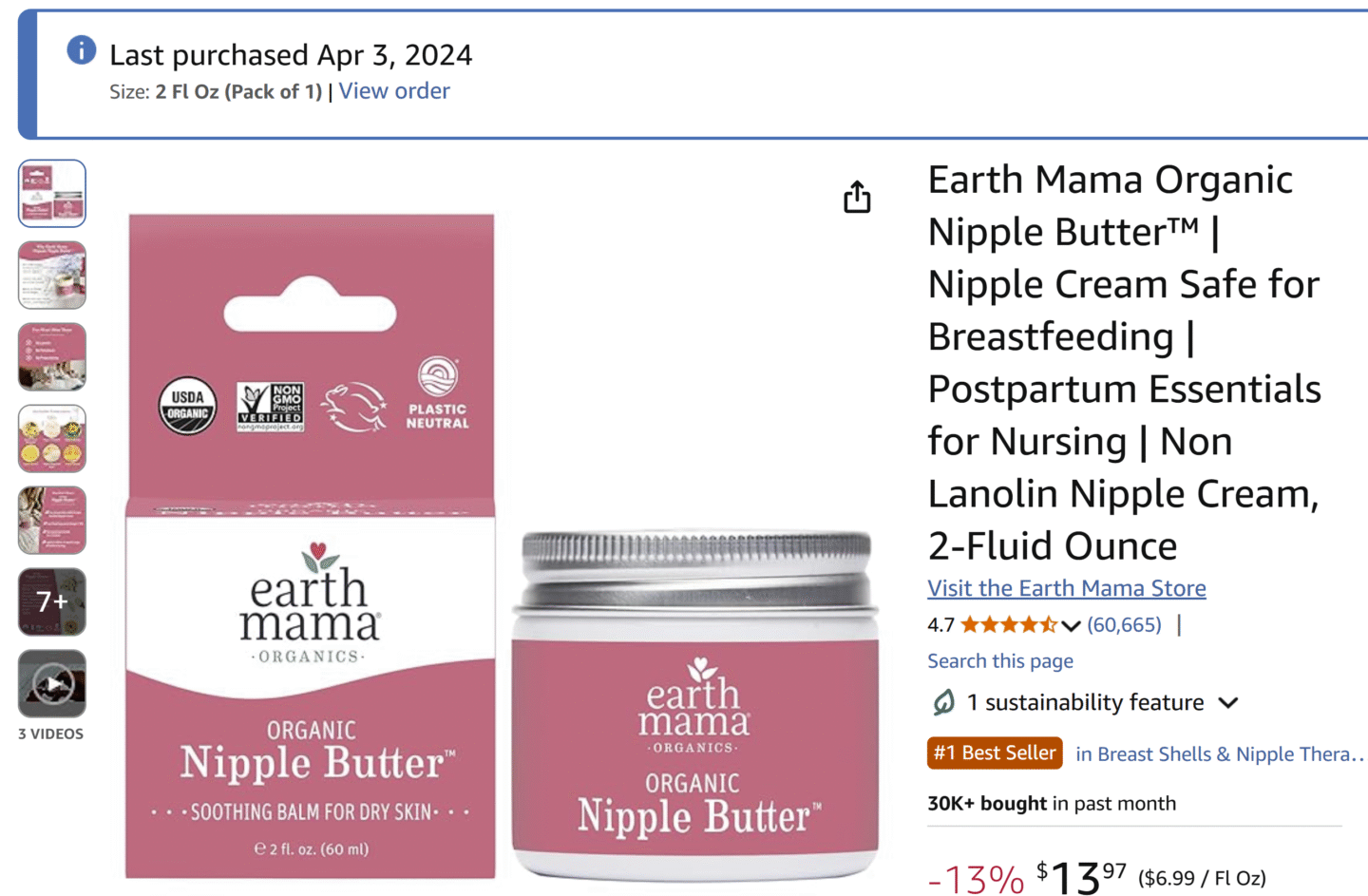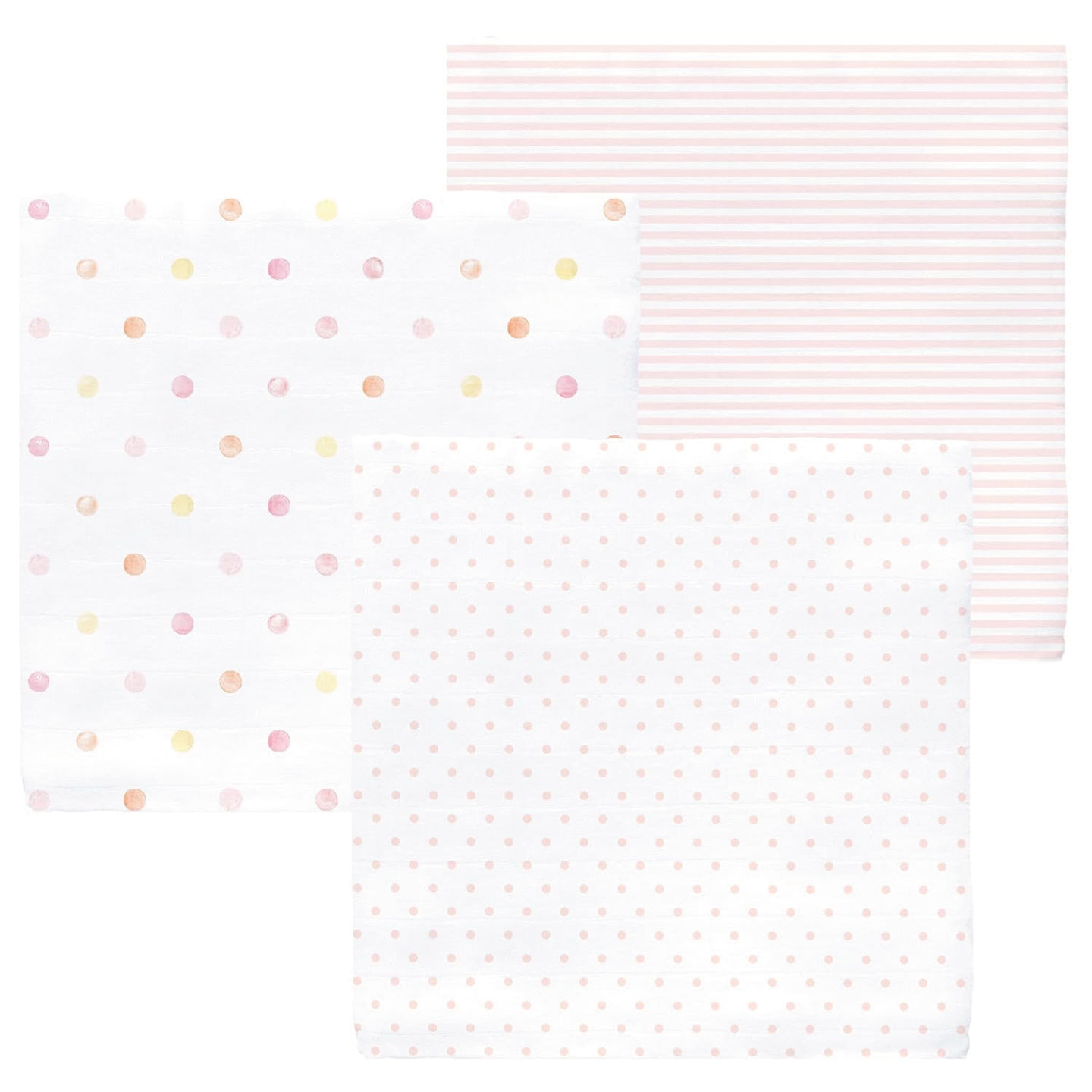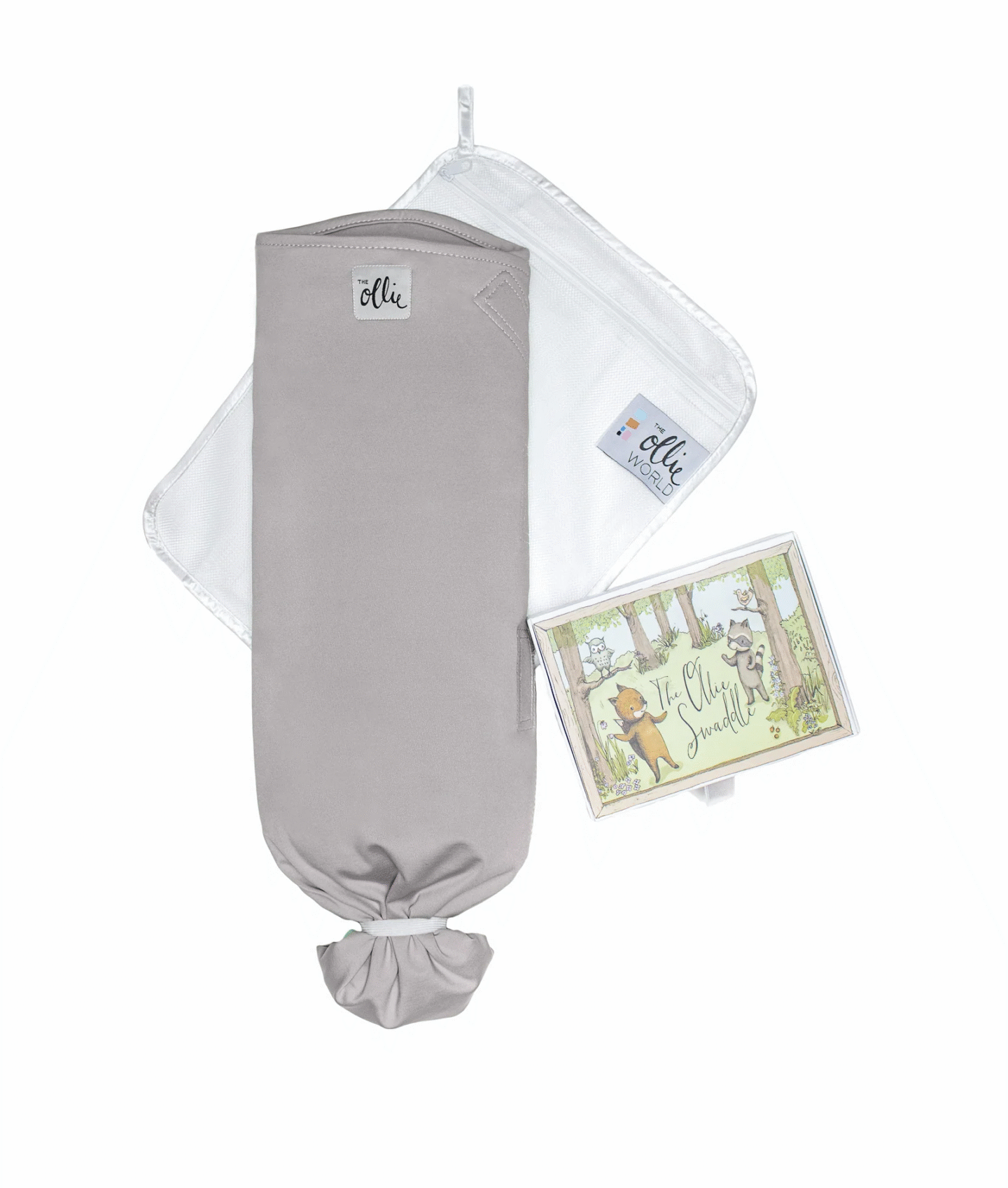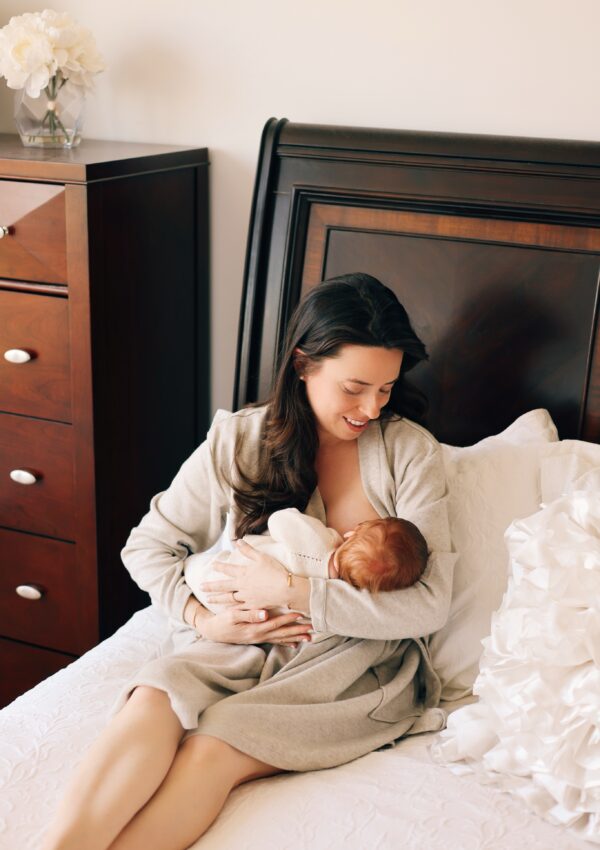I have been breastfeeding for 12 months, and overall, it has been a positive experience. I exclusively pumped for two months, and then I switched to nursing our baby full-time.
If you would like to breastfeed in the future, but the thought of nursing overwhelms you, I understand you so well, so I hope that after reading this post, you feel a little better!
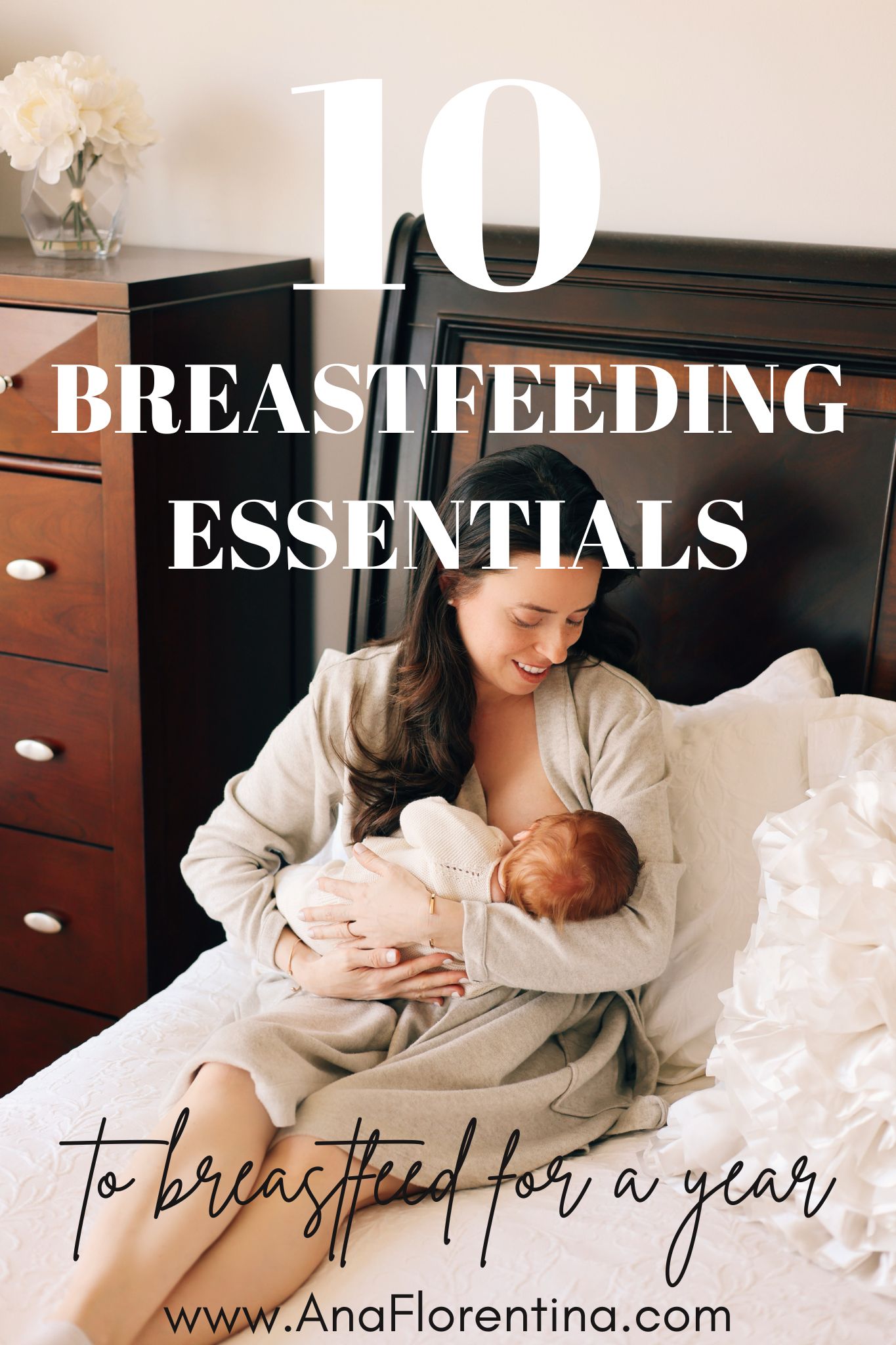
Speaking to a lactation consultant or women who view breastfeeding and nursing positively can be helpful, so I recommend doing so.
You can also join breastfeeding support groups on Facebook or in person, to see that you aren’t alone, and to hear what is working best for other moms!
I’ve been on my breastfeeding journey for over a year, so I thought I’d share everything I’ve learned in case it’s helpful for you!
The 7 Benefits of Breastfeeding Your Baby
I’ve read that the American Academy of Pediatrics recommends exclusive breastfeeding for six months, and as of 2022, has updated its guidelines to recommend continuous breastfeeding for 2 years and beyond.
My mother, a retired pediatrician, breastfed her four children for about a year and a half, and so did my sister with her two kids, so I knew I wanted to give breastfeeding a try.
Breastfeeding has numerous benefits for you and your baby, and here are seven that helped me understand breastfeeding better:
- Breast milk has antibodies to protect your baby against infections and allergies.
- Breast milk helps build a strong immune system for your baby.
- Helps the uterus return to its pre-pregnancy size.
- Protects against various risks to the mother.
- Breastfeeding naturally soothes your baby.
- Establishes trust between the baby and the mother.
- Breastfeeding can be done anywhere without needing other supplies.
Number 5 is my favorite, and probably why my baby cried so little these past twelve months. Usually, when a baby cries, it means the baby is still hungry or needs to be close to you and in your arms. As a default, during my baby’s first six months, if she cried, I nursed her.
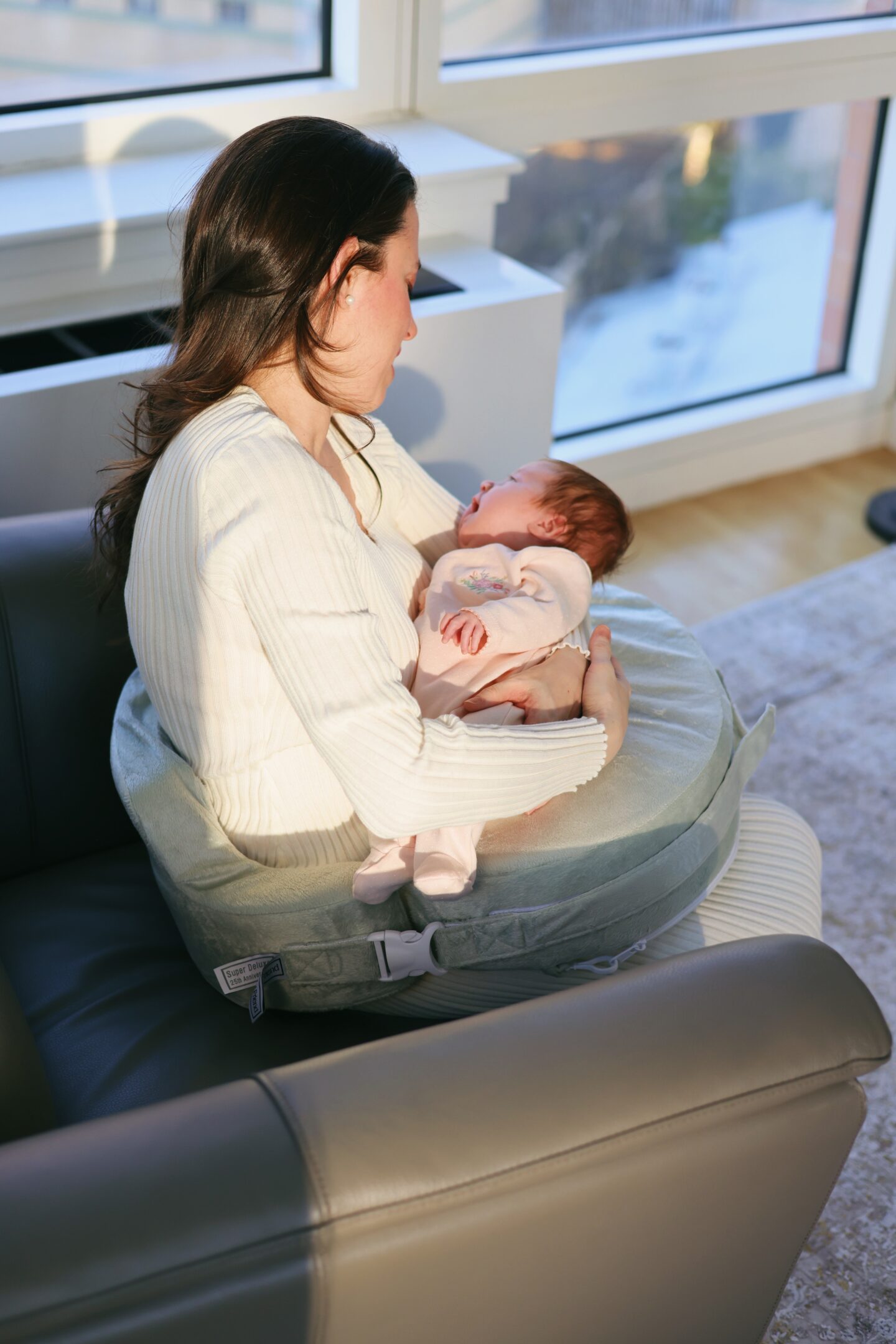
My 10 Breastfeeding Must-Haves!
I have learned a lot over the past year of my breastfeeding journey, so here are the essentials that made the entire process easier for me. I hope they help you too!
1. Nursing Pillow
I love the My Brest Friend Nursing Pillow the most. I initially ordered a regular nursing pillow that lacked back support and had no strap, making nursing more complicated than it needed to be. Once I got this pillow, I immediately noticed the difference. The extra-thick cushion keeps the baby aligned and secure on a firm surface. The My Brest Friend Nursing Pillow is a game-changer, and the back support is a lifesaver. Personally, this has been my most important item for nursing my baby.
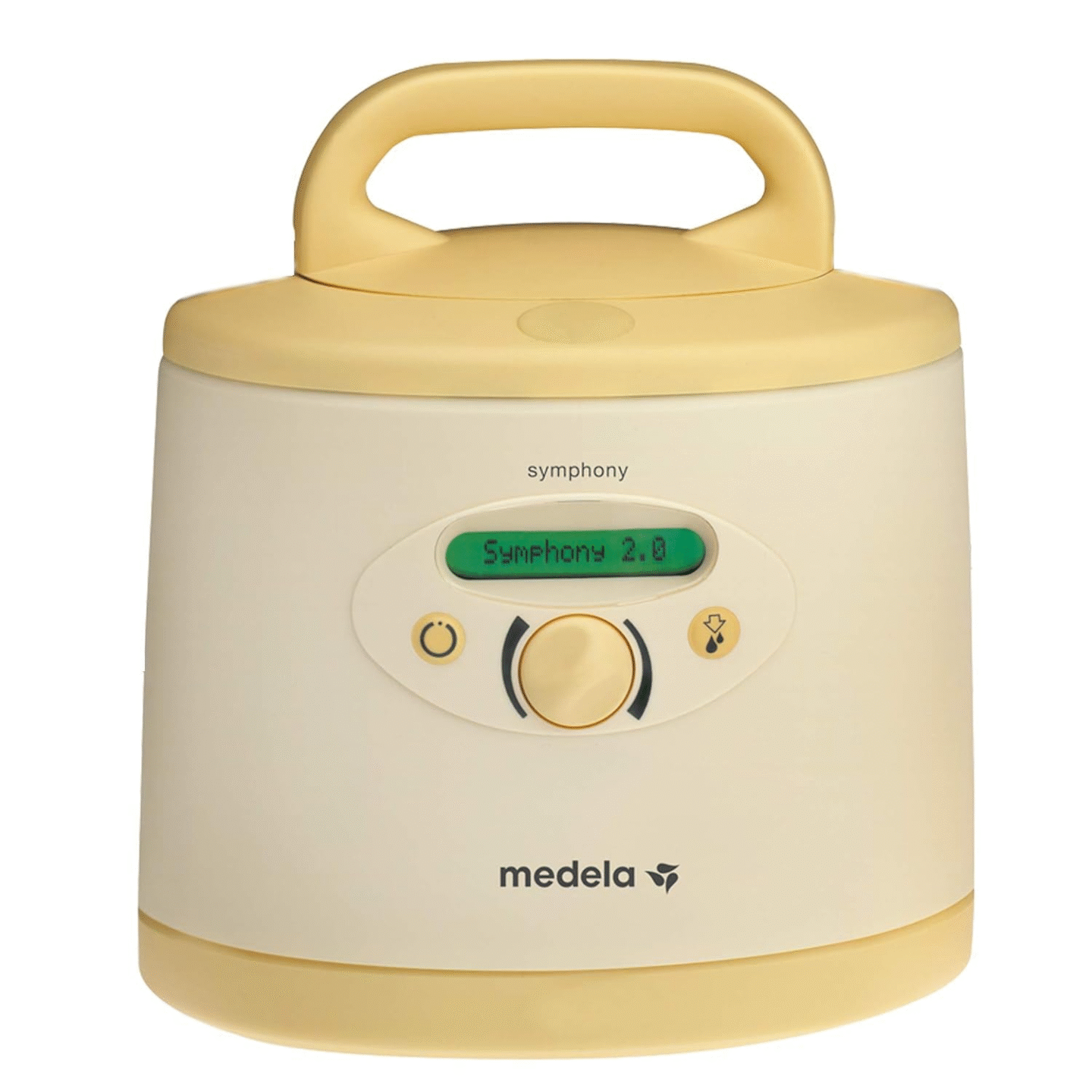
2. Hospital Grade Pump
While our baby was in the NICU, all I could do was pump. Because I spent 10+ hours a day at the hospital, I used the Medela Symphony PLUS Breast Pump located inside the pump rooms, which worked extremely well for me. At home, I tried using the pump I had ordered through my insurance, but it did not work as efficiently as the Medela pump. If you encounter the same issue, ask at your hospital whether you can rent a pump as well (I paid $90 per month for three months); this saved me.
Get this Manual Breast Pump that is inexpensive, operates without batteries, and fits in a handbag. If you are an overproducer and need to relieve pressure, this manual pump can help you. It’s also a great option if using an electric pump is putting strain on your nipples or causing you excessive pain.
3. A Comfortable Bra
Early on, I purchased these seamless Maternity Bras, which I used throughout my pregnancy, and then for nursing once our baby came home.
After six or seven months, I started using this Crossover Nursing Bra. After the delivery, it did not fit me due to the swelling. It is by far my favorite nursing bra. I still wear it one year postpartum because it makes nursing so easy! I wear it in size L. Remember to avoid wearing tight-fitting bras to prevent mastitis or engorged breasts.
Regarding pumping bras, I never found one that I liked or would recommend.
4. Nursing Pads
I still use these Nursing Pads around the clock and prefer them over the thicker pads. As a breastfeeding mom, finding lightweight nursing pads was crucial for comfort. These are extra absorbent, discreet, gentle on sensitive skin, and essential for breastfeeding moms.
Get these organic nursing pads if you prefer a washable and reusable option.
You may also want to get Hot & Cold Pads. They are a great option for pain relief.

5. Nursing Shawl
If you plan to take your baby everywhere with you, you will find this nursing shawl incredibly useful. I cannot live without mine, and use it everywhere.
Nursing your baby in public can be uncomfortable, especially when there are others around, but this shawl made nursing in public easier for me.
The fabric is breathable for the baby, lightweight, discreet, and elegant. The opening at the top is wide enough for you to keep an eye on your baby. I give this shawl bonus points because it looks so elegant and chic!
6. Nipple Cream
This Nipple Cream was my favorite during my first trimester, I especially applied it before showering to protect sensitive nipples. This cream is lanolin-free, non-greasy, and hypoallergenic.
I also purchased this popular Earth Mama Nipple Butter that I consistently apply before and immediately after nursing my baby. This butter is fantastic for moms who will be exclusively pumping or nursing. Apply the butter to the flanges before your pumping session, or apply it to your nipples post-nursing session for relief.
7. Scoop Neck Tops
These nursing-friendly scoop-neck tops have made nursing significantly easier for me. The material is thin, lightweight, and comfortable, and I pull the neckline down when nursing.
I’ve purchased every color over the past years and sized up during my pregnancy. They hold up well after washing and drying them, too.
If these tops are sold out, sign up to get a back-in-stock notification!
8. Button Front Pajamas
You will want pajamas that make nursing super easy. My favorites are the Modal Long PJ Sets from Eberjey.
9. Cotton Muslin Swaddle Blankets
We LOVE these blankets. During my baby’s first 6 months, my constant concern was keeping my baby warm while breastfeeding. I came across this set of three cotton blankets that come in 15 colors, are the perfect size, and are machine washable.
These blankets became an instant favorite and have held up well over the past year. I now use them to cover our baby in the stroller, but you can use them in many ways.

10. Baby Tracking App
We track all of our baby’s feedings and diaper changes in an app. A tracking app is valuable for peace of mind, organization, and overall monitoring of your baby. Huckleberry and Baby Connect are popular apps, but I prefer Sprouts. My husband downloaded it on his phone, so he can check if our daughter is due for anything at any time. This is great for making him feel involved with our baby!
Initially, I used the app to track my pumping sessions, but once our baby came home, I switched to full-time nursing and started using the app to track diapers and nursing sessions. When I am out doing errands with her, I use the app to track her naps. Once she started eating solids, I began using the app to track the feedings. I can’t live without my Sprouts app!
Breastfeeding & Baby Reflux
My baby had severe reflux for seven months. Reflux is common and usually caused by an immature digestive system.
I changed her outfit 5-6 times per day (it got quite messy and I did loads of laundry during those months!), and these white bibs with side snaps helped me the most (I prefer them 10x more than any bib with a velcro closure in the back).
All I can say is have a lot of patience, mama! Your baby will eventually grow out of it by the age of one. My nephew had reflux for eight months, so I expected my daughter to be similar, yet by seven months, she was better.
I held my baby upright for 30-45 minutes after each feeding. This was A LOT, especially during the newborn months when I was nursing around the clock.
If your baby is gaining weight as expected, reflux should not be a concern, but always check with your pediatrician.
Breastfeeding & Sleeping
The first four months were crazy because babies must be fed three times per night. Once my baby was 4 months old, she started sleeping 10 hours per night, typically from 9:30 PM until around 7:30 AM, and she still does! I think that being patient with her at the beginning has paid off 🙂
I have not sleep-trained our baby and prefer nursing her to sleep – a less emotionally stressful approach. I did not have a night nurse and opted to handle everything myself. Learning how to help a baby fall asleep requires time, patience, and loads of love!
I was listening to a podcast by Erica Komisar (she is amazing!) recently, where she explained that babies under the age of 1 should not be sleep-trained:
When babies cry, they need their mother, when they cry, they are scared, when they are in distress, if you don’t respond to their distress, all you are teaching them is that the world is an unsafe place and you are an untrustworthy attachment figure, and they go into life believing that. And they carry that into their relationships, and the future, and they feel lonely and alone. The absence of mothers in children under the age of three, impacts their mental health going forward.
How I got my baby to sleep 10 hours per night:
- Ensure your baby gets all the calories they need during the daytime. I fed my baby every 2.5 – 3 hours during the newborn stage (first 3 to 4 months). As she approached her fourth month, I focused on making sure she received all her calories between 7 am and 9 pm. I downloaded the Sprout Baby Tracker to my phone. This app helps me track the length of my nursing sessions. I cannot live without it.
- Use the Ollie Swaddle and/or Dreamland Sleep Swaddle. Swaddling is important because it mimics the feeling of being held in the womb. It also prevents babies from startling themselves awake. We tried five swaddles, but none worked as well as these two. Our baby was not a big fan of having her arms tucked in, so we mostly used them as a sleep sack, and having both options was important. Once she outgrew them (around 7 months), we switched to this sleeping bag from KYTE and have been using it daily since then.
- Use the Nanit Sound and Light Machine. I find this machine useful for three reasons: the digital clock, the soothing sounds, and the customizable light. We use the sound of waves during her daytime naps and at night. Hatch has this popular machine too.
- Have a bedside crib or bassinet. The baby should sleep in the same room as the mother for at least six months. This mini crib with wheels was great! If I extended my arm while lying in bed, I could touch her. If she woke up while I was still sleeping, she saw me and remained there calmly. When she outgrew the mini crib, we converted the mini into a regular-sized crib.
I am convinced that nursing my baby to sleep, and what I detailed above, contributed to my baby sleeping 10 hours straight per night.
Not all nights are the same! Babies will cry at night while teething, require extra nursing sessions during growth spurts (please keep this in mind), or wake up randomly if the room is too cold or hot.
Once your baby is older, you can try placing the palm of your hand on your baby’s belly or chest to soothe and help them fall back asleep. Sometimes this works, and sometimes it does not, and that’s okay.
I always pick up my baby if I hear her cry, or if I put her down and she gets up or starts to whine, and I hug her tightly because I feel so lucky to be able to do so!
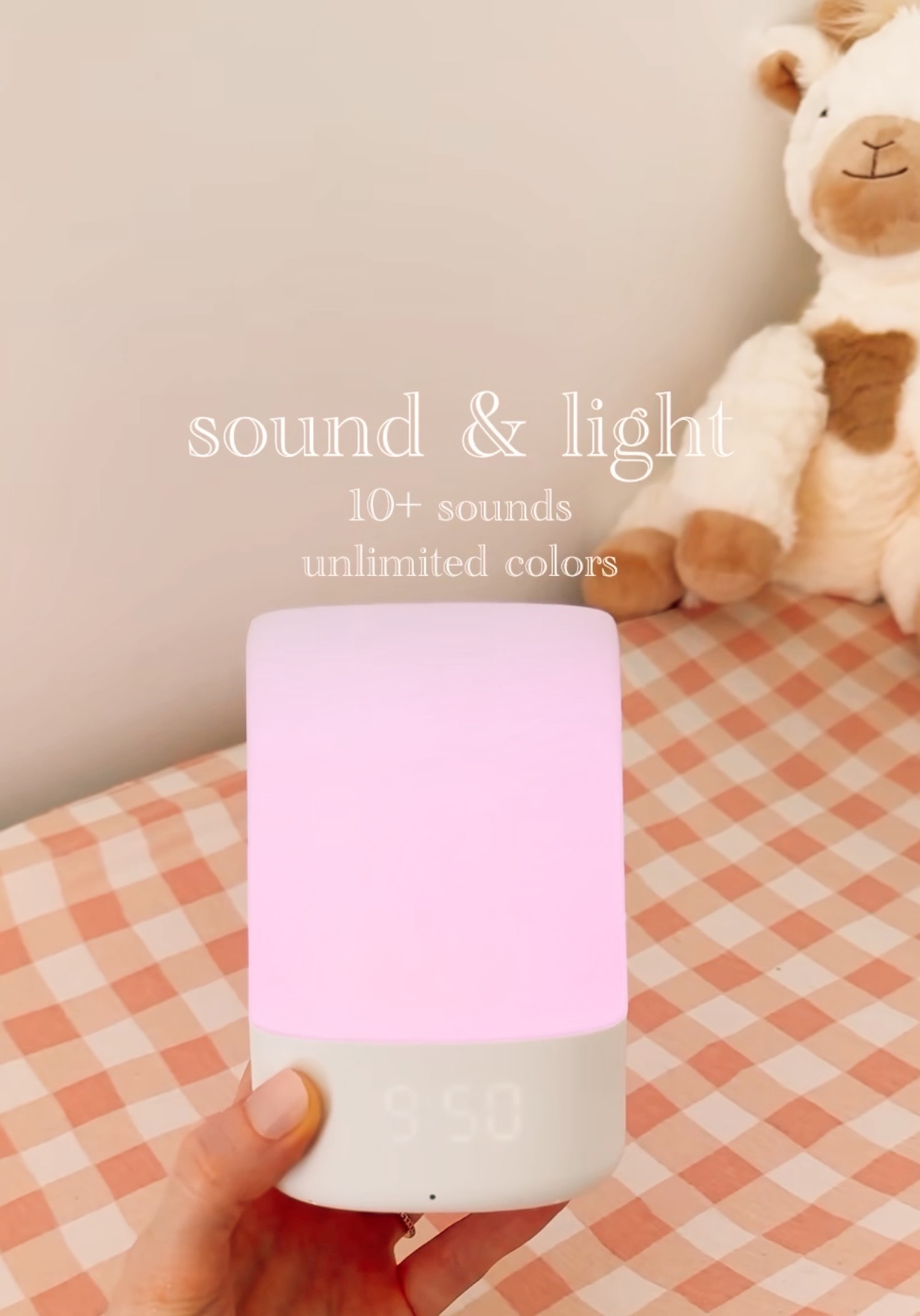
READ: 7 Lessons I Learned from Lactation Consultants
How long should a newborn breastfeed each time?
My newborn baby breastfed for 10 to 40 minutes per session. During the first few weeks and months, I nursed her every 2-3 hours, and even more frequently during the first few days, or when she had a growth spurt. You will notice a growth spurt because your baby will want to nurse nonstop, all day long.
I always fed my baby on demand, it’s as if she had a 24/7 open milk bar! I also allowed her to nurse until she was satisfied, and if she fell asleep, I would nudge her to see if she wanted more.
How to increase breast milk naturally?
I increased my water intake significantly and stopped drinking tea. I do not think that there is anything out there that magically increases your supply.
Your milk supply depends on how often you nurse or pump your breasts, so it is recommended that you nurse or pump every 3 hours.
Avoid pumping each side longer than 30 minutes.
Pumping for longer than 30 minutes will damage your breast tissue. Most pumps have built-in timers that will stop the pump after 30 minutes.
What is the 5-5-5 Postpartum Rule?
It’s a guideline for postpartum recovery that suggests focusing on rest in the first 15 days after giving birth. This postpartum rule recommends 5 days in bed, 5 days on the bed, and 5 days around the bed.
I was unable to follow this rule because on day 7, I was released from the hospital, and the following day, I got on a train to visit our baby in the NICU. And I did that for 49 days straight, until she was released (a day before her original due date).

This is my favorite nursing shawl
A final note!
Breastfeeding is worth the effort, for you and your baby, in the short and long run.
Every breastfeeding journey is different. During my pregnancy, I was warned that my baby might never be able to nurse. Once she was born, I had a C-section, got hooked to a magnesium machine due to pre-eclampsia, and had a baby with a ventilator in the NICU. Did I have any strength left in me to pump around the clock, just in case? Not really… but I knew it was important for her, so I stayed positive and went ahead with it. So while our baby spent her first 49 days in the NICU, I exclusively pumped, and once she arrived home, I switched to nursing full-time.
Everything in life requires effort: a university degree, a new job or position, a sport, and even a new hobby. It’s the same with breastfeeding and nursing.
Once the baby starts solids, the nursing sessions are drastically reduced from 12 sessions per day to 4 per day. That’s where we are now… it went by fast!
I wanted to mention that I took a daily 6-hour break from pumping while exclusively pumping (during the time our baby was hospitalized), typically from midnight until 6:30 AM. My body and my mental health needed it. This did not seem to impact my supply.
I have not had mastitis, but I did have a clogged duct once, which disappeared quickly after I prioritized nursing her a little extra on that side.
Throughout your breastfeeding journey, be picky with who you seek advice from. Prioritize a knowledgeable lactation consultant or someone who views babies and breastfeeding as positive. That will make a difference.
READ NEXT:
My surgery, birth story, and baby registry favorites.
For pregnancy announcement dresses, take a look at this post or return to the blog.
Share this article with anyone who will find it useful 🙂

